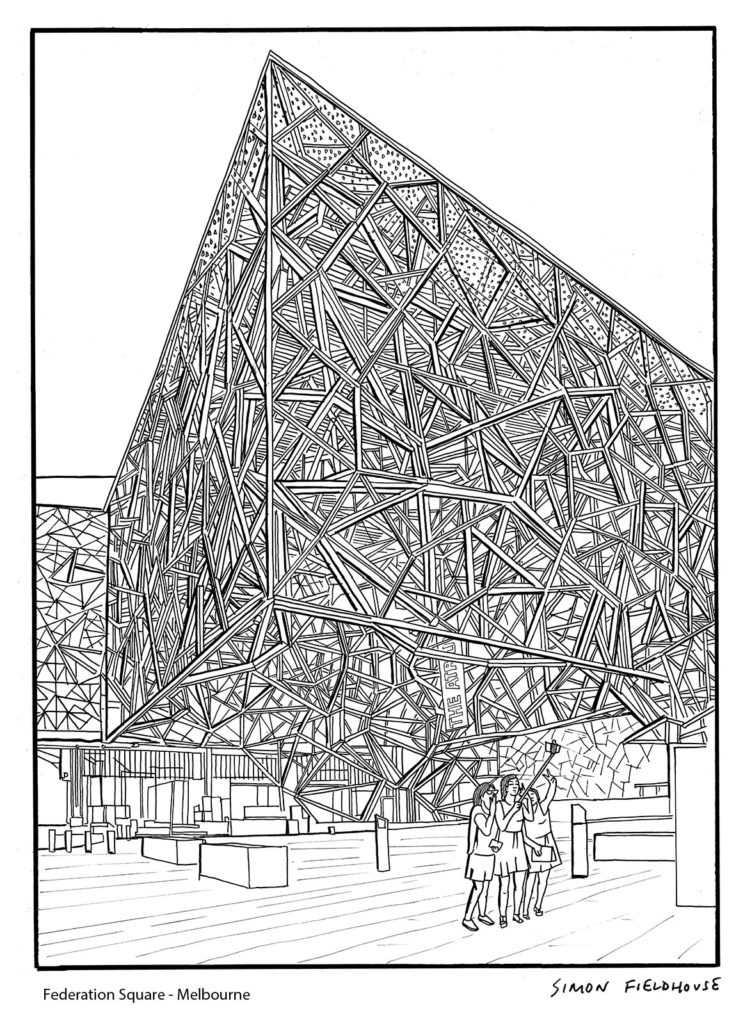
Federation Square - Melbourne
Federation Square - Melbourne, located in the heart of Melbourne, is a bustling and vibrant hub that embodies the city's diverse and dynamic cultural spirit. This iconic landmark has played a crucial role in transforming Melbourne into a world-class metropolis, attracting tourists, locals, and artists alike. Spread across an area of 3.2 hectares, Federation Square stands as a testament to Melbourne's commitment to fostering art, culture, and community.
Federation Square was officially opened in 2002 to celebrate the centenary of Australia's federation. It was conceived as a meeting place and cultural precinct, designed to host a wide array of events and activities. Its unique architectural design, featuring bold lines and a combination of glass, steel, and sandstone, sets it apart from other urban spaces. The juxtaposition of modernity and history in its design is a nod to Melbourne's rich past and its forward-looking aspirations.
One of Federation Square's most remarkable features is its role as a cultural epicenter. It houses some of Melbourne's most prestigious cultural institutions, including the Australian Centre for the Moving Image (ACMI) and the Ian Potter Centre: NGV Australia. ACMI showcases the evolution of film, television, and digital culture, making it a vital space for media enthusiasts and artists. The NGV Australia, on the other hand, houses a vast collection of Australian art, giving visitors a glimpse into the nation's artistic history.
Apart from these cultural institutions, Federation Square regularly hosts an array of events, from music festivals and art exhibitions to food and wine festivals. The open spaces provide a canvas for creativity and self-expression, and the Atrium, with its stunning glass roof, serves as an all-weather gathering point for Melburnians and tourists alike.
Federation Square is more than just a cultural precinct; it is a testament to Melbourne's commitment to sustainability and environmental consciousness. The square was constructed with a focus on environmentally responsible design. It incorporates energy-efficient technologies, water conservation systems, and a commitment to recycling and waste reduction. This eco-friendly approach aligns with Melbourne's broader goals of creating a sustainable and livable city.
Federation Square's significance extends beyond its cultural and environmental aspects. It holds a special place in the hearts of Melburnians as a symbol of unity and inclusivity. The square serves as a space for public rallies, protests, and gatherings, providing a platform for people to voice their concerns and opinions. It is a symbol of the city's commitment to democratic values and freedom of expression.
In conclusion, Federation Square is the beating heart of Melbourne, a city known for its arts, culture, and diversity. It stands as a testament to Melbourne's commitment to fostering creativity, preserving its heritage, and embracing sustainability. With its stunning architecture, cultural institutions, and a commitment to democracy, Federation Square encapsulates the essence of Melbourne, making it a must-visit destination for both tourists and locals. It is more than just a place; it is a living, breathing embodiment of Melbourne's past, present, and future.
One of the defining features of Federation Square's architecture is its juxtaposition of bold, contemporary lines and materials against the backdrop of historical sandstone buildings. This juxtaposition is a deliberate nod to Melbourne's rich heritage and its position as a forward-looking, innovative city. The square's geometric and angular design, featuring an array of glass facades and steel structures, creates a striking contrast with the surrounding Victorian-era architecture. It has been described as deconstructivist in style, a design philosophy that challenges traditional architectural norms.
The centrepiece of Federation Square is the Ian Potter Centre: NGV Australia, a building constructed with a strikingly contemporary design. It features a distinctive ochre-colored façade and innovative use of glass that allows natural light to flow into the gallery spaces. The NGV building is a testament to how modern architecture can be seamlessly integrated into the historical urban fabric of the city.
Another architectural highlight is the Atrium, a vast, open, and covered space at the heart of Federation Square. Its most distinctive feature is the intricate glass roof, which is comprised of irregularly shaped geometric forms that allow natural light to filter through. The Atrium is a flexible, all-weather event space, and its design captures the essence of Melbourne's ever-changing weather patterns. The light and shadow created by the glass roof create a dynamic and visually captivating environment, enhancing the square's overall appeal.
Federation Square's architects also gave significant thought to the square's relationship with the Yarra River. A network of pedestrian bridges and walkways connects the square to the riverbank, making it an integral part of the city's landscape. The architects strategically positioned Federation Square to take advantage of its unique location, affording visitors beautiful views of the river, as well as the iconic Flinders Street Station across the road.
The architecture of Federation Square has garnered international acclaim, with the square receiving numerous awards and accolades for its innovative and iconic design. It is not merely a place of gathering but a living art form, inviting visitors to appreciate the beauty and creativity inherent in its architectural design. The square's design is emblematic of Melbourne's progressive spirit and commitment to fostering the arts, making it a symbol of the city's modern identity while paying homage to its historical roots.
In essence, Federation Square's architecture is a visual feast that captures the essence of Melbourne's character. Its fusion of modernity and history serves as an inspiration, demonstrating that innovation and preservation can coexist harmoniously in a city's architectural landscape.